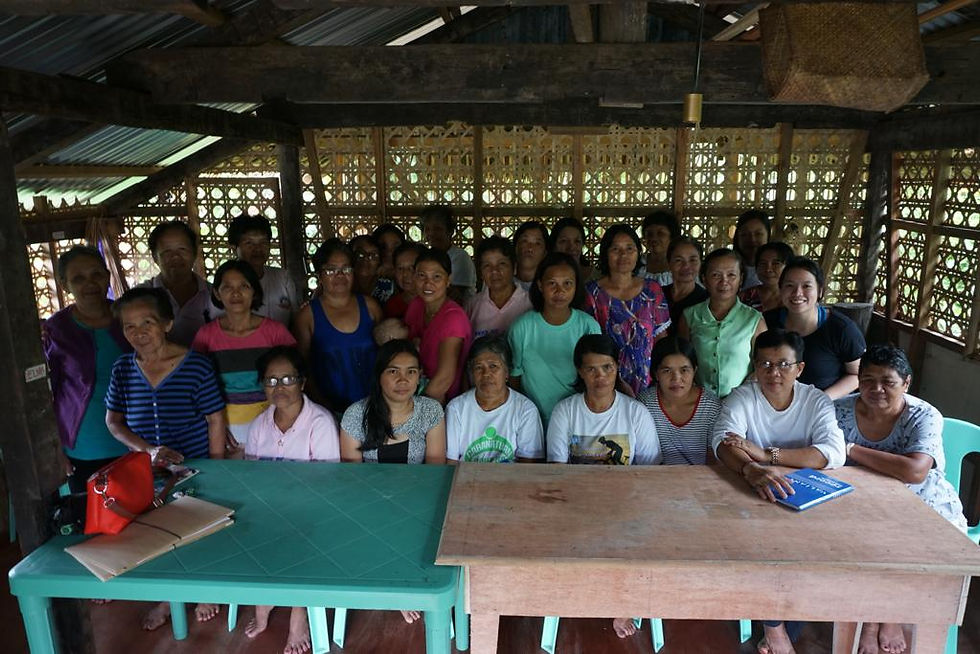The story behind Woven
- React
- Jun 1, 2019
- 3 min read
Updated: Apr 17, 2020
We met Trish at the recent Startup Weekend : Social Enterprises edition and were super inspired by her work (the beauty of the bags of course also caught our eye).

We hope this inspires our readers and followers that a "good idea" can grow into something meaningful and impactful.
1.Tell us about Woven.ph and the journey to reach where you are now?
Back in 2014, I did a lot of traveling and freelanced as a researcher, writer, and photographer. One assignment took me to the island of Samar after Super Typhoon Haiyan. My partner, John Francia, and I were part of a team that helped jumpstart livelihoods in the area. It was on one of these trips that we met the weavers of Basey, a town in Samar. We got excited by the colorful mats and thought it would be a good idea to get involved by organizing the communities.
Shortly after, John became a volunteer and spent a year in the community, helping the weavers earn a living from their craft.
Mat weaving is a centuries-old tradition in the Philippines, a craft that has been passed on from generation to generation. The mat was known as banig, created through the weaving of dried leaves to form geometric patterns. Banig was used primarily as a sleeping mat, but in the past, its uses extended to extraordinary occasions like weddings, festivals, christenings, and even burials.

The banig was an integral part of Philippine culture, a way of telling stories through the interlacing of plant fibers. But it was a dying craft, its importance forgotten or neglected in the last decades.
The problem stemmed from poverty. The community that WOVEN was involved with was in Samar, one of the ten poorest provinces in the country. Through research we found out that most of the profits from the banig industry ended up with the consolidators and large-scale producers, as they had the capability to add value to the banig mats, the capacities to produce more, and have access to market.
Wanting to solve the problems of inequitable distribution of wealth among weavers in the industry, we started plans for the social enterprise in 2016 and officially registered it in 2017 with the aim to uplift the lives of Filipino artisans.
2. What is the impact you want to create now and in the long run?
During our initial years, we worked hard to preserve the banig weaving and embroidery industry as an economically and culturally relevant source of income. Our entire business model was built on creating new and exciting products using traditional materials and techniques in order to generate more market value for all players across the value chain – from the entrepreneurs (us) to the sewer, embroider, weaver, and community organizations.
Moving forward, we wish to partner with more crafts communities around the country. By exploring other weaving communities and studying their processes and value chain, we aim to find exciting textiles that can be introduced as new collections for Woven. But more than that, the enterprise aim to find solutions and come up with the right interventions that will empower these local artisans and create greater economic value for their craft.
In the long run, we hope to become a creator of high-quality and modern, yet community-based products, utilizing traditional materials and techniques. It is our goal to be a brand known for its design and sustainable practices in the Philippines and abroad, enabling us to achieve significant sales and profits both for the enterprise and the incomes of the craft communities. Ultimately, the income generated for the weavers, embroiders and sewers will be enough to lift at least half of them out of subsistence living.
3. Where do you see yourself and Woven.ph in 5 years, and what are your plans to make it sustainable?
With a bigger team and a growing list of products, we're keen on expanding its vision and goals for the business. The social enterprise had already branched out from Basey’s banig mats and explored other traditional materials in other weaving communities. This compelled us to look deeper into Woven’s social impact, reviewing the opportunities for replicating what was done in Basey.

In 2018, Woven was also able to secure partnerships with the Work Together Foundation and Forest Foundation, which led to the provision of funds for stronger community development in Basey. Needless to say, it was a big help to the social enterprise, enabling us to accomplish more at the grassroots level without being impeded by financial constraints. This led us to think about importance of fostering such relationships and building a bigger Woven network or eco-system that will collectively support and uplift Philippine craft communities.
.png)




Comments